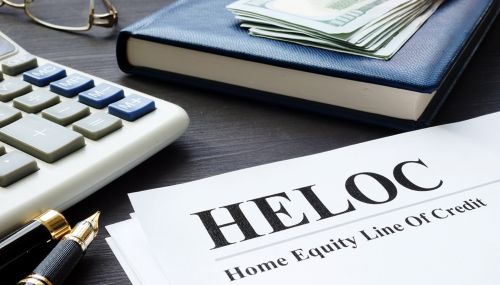

Refinancing a Home Equity Line of Credit can be a game-changer for homeowners looking to save money. Whether you’re facing rising interest rates or aiming to tap into your home’s equity, refinancing offers flexibility and financial relief. But how do you distinguish when the time is right?
Market conditions play a pivotal role in determining the right time to refinance. When interest rates are low, it’s a golden opportunity to lock in better terms. For homeowners with a HELOC, refinancing allows them to secure a fixed rate or take advantage of better lending conditions. So, let’s dive into the factors influencing the timing and the best strategies to get the most out of your refinancing.
Consider Your Current Financial Situation
Before moving forward with any refinancing, assessing your financial position is essential. Lenders will look closely at your credit score, income, and debt-to-income ratio. However, if you’ve experienced monetary challenges, you might face higher interest rates or less favorable conditions. It’s crucial to understand that refinancing isn’t just about securing a better deal but also about ensuring it fits your goals.
Evaluate Your Home’s Equity
Your home’s equity can significantly impact your refinancing options. The more equity you have, the more favorable your refinancing terms will likely be. Lenders typically allow you to borrow up to 85% of your home’s appraised value. This is something to consider when planning your refinance. Checking with a lender could provide insights into your equity’s influence on potential terms.
Interest Rates and Market Trends
Interest rates are another major factor in the refinancing process. Your monthly payments could be significantly lowered if the current rate environment is favorable. But, as with any financial decision, it’s essential to watch market trends closely. A slight dip or rate increase can impact your loan’s overall cost. Additionally, watch inflation and broader economic conditions, as they often influence interest rates.
Understand the Terms of Your Current HELOC
Another critical factor is understanding your existing terms. Sometimes, adjusting your existing plan can be more beneficial than starting a new refinance. For example, some homeowners may benefit significantly from switching to a fixed-rate product if their variable rate has increased dramatically. In contrast, others may find a new line of credit more advantageous.
Know the Costs of Refinancing
Finally, consider the costs associated with refinancing. While refinancing can lower monthly payments, it often comes with fees that may offset those savings. Standard fees include appraisal costs, title insurance, and closing costs. However, these fees are usually worth it if the new terms significantly impact your monetary situation. You want to ensure that it makes economic sense in the long run, and these hidden fees are an essential part of the equation.
The Role of Lender Selection
Not all lenders offer the same terms, so choosing the right lender is crucial to refinancing success. Comparing offers from various lenders can help you find the most favorable terms, whether it’s the interest rate or something else. Some lenders may offer additional perks, such as switching between fixed and variable rates without penalty. A well-established lender like Amerisave can provide insights into the best refinancing options and help you make a sound decision.
When it comes to HELOCrefinancing, timing and strategy are everything. By considering your financial situation and current loan terms, you can decide what works in your favor. If you’re unsure where to start, consider working with a lender to get expert guidance. After all, with the correct information, it can be a powerful tool in securing your financial future.


